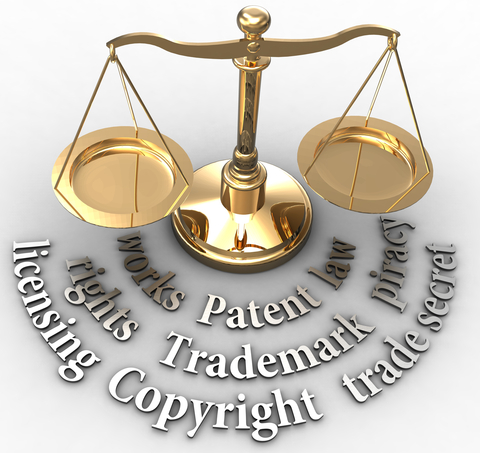Categories
- Additional Insured
- ChildrensProducts
- Claims Made
- Cyber Insurance
- Dietary Supplements and Nutraceuticals
- Ecigarettes
- Firearms Insurance
- Food Products
- Foreign Products Liability
- Foreseeable Misuse
- Frivolous Lawsuits
- General Liability
- Industrial
- Infographics
- Intellectual Property
- Looking ahead
- Marijuana Liability
- Medical Products
- Mutual Indemnification
- Nano Technology
- News
- Online Sellers Insurance Requirements
- Outsourcing
- Piercing The Corporate Veil
- Pollution Liability
- Product liability
- Product Recall
- Retail Chain Store
- Start-Up Business
- Statute of Repose
- Surplus Lines Insurance
- Technology
Insuring Trademark Infringement Claims

Better protection needed by the insurance industry
When it comes to providing clear coverage for trademark infringement claims, the insurance industry is doing a poor job. That’s scary because of the rapid increase in this type of litigation due to the rise of Internet marketing and branding.
A trademark is a distinctive design, picture, emblem, logo, or wording that identifies certain goods or services as those provided by a specific person or enterprise.
Understanding trademarks
The holder of a trademark owns the right to an intellectual property. This gives them exclusive use of the mark with their products and services. The holder can legally prevent  others from infringing on such a mark. Consequently, this also prevents confusion in the marketplace as to the origin of goods and services.
others from infringing on such a mark. Consequently, this also prevents confusion in the marketplace as to the origin of goods and services.
No requirement exists for the owner of a trademark to register such a trademark with the U.S. Patent and Trademark Office. Of course, voluntary registration is optional. Each country has a similar registry. An international registry can be found in Madrid, Spain.
The cost of trademark infringement
The successful claimant in a trademark infringement lawsuit is entitled to damages. These may include injunctive relief to prevent future use of trademark, lost profits, disgorgement of infringer’s profits and/or attorney’s fees. In addition, paying treble damages is possible under the Lanham Act. Of course, these can be astronomical. The average cost of bringing a trademark infringement case is $300,00. Therefore, just paying the claimant’s attorneys’ fees can be overwhelming to the losing party.
Trademark infringement litigation is on the rise. According to the Mitchell Study, litigation increased 40% when comparing the last five years (2003 to 2007) to the previous five years. This increased litigation is fueled by the Internet for two reasons.
First is the explosion of domain names. No requirement exists for conducting a trademark search to confirm that no one holds the rights before registering a domain name. Second, the Internet makes it more likely that two different firms using existing or similar names will compete against each other.
The confusion over infringement coverage
The possible coverages for trademark infringement claims include General Liability, Directors & Officers Liability, Errors & Omissions Liability, and Media Liability.
A General Liability policy provides coverage for Advertising Injury. But the poorly written policy language makes predicting whether coverage exists for trademark infringement nearly impossible. This is unfortunate because almost all trademark infringement cases arise out of advertising products and services. Court cases are all over the board with outcomes determined by which ISO version of the policy form is being used. However, the most recent ISO 2001 form implies that no coverage exists for trademark infringement. But it does provide a poorly-worded exception. Therefore, the issue of coverage remains cloudy.
The bottom line
I advise that you never depend on a General Liability policy for trademark infringement coverage.
I reviewed many Directors & Officers Liability and Errors & Omissions policies. Most include exclusions for trademark infringement. Media Liability policies are available for companies in the media business. But many Media Liability forms inadvertently exclude trademark infringement claims through a “deceptive trade practices” exclusion.
I suggest purchase a specific Intellectual Property infringement policy. Unfortunately, the applications can be long and tedious to fill out, and the premiums can be expensive.
Click here for the the product that we offer manufacturers/distributors/importers as an example of an Intellectual Property Infringement policy
Source: Leib Dodell. “The Trademark Problem: Casualty Insurance’s Dirty Little Secret.” Carrier Management. 15 May 2013.
Posted By: John M. Sadler-
 Click the Button Below to Get Your
Click the Button Below to Get Your
No-Obligation Quotes from Among the
Top 18 Leading Insurance Carriers Today -
Recent Industry News
- Amazon Sellers and Vendors Strategy Including Insurance Requirements
- Walmart Sellers Insurance
- Product Liability Limit Requirements of Online Sellers
- State-by-State Product Liability Analysis of Laws Impacting Businesses
- Children’s Product Liability: Strange Claims and Need for Insurance
- Product Liability vs. Environmental Insurance for the Chemical Industry
- Product Liability in the 3D Printing Industry: New Materials and Their Significance
- Product Liability Concerns in Agricultural Equipment Enhanced with Artificial Intelligence
- Navigate Product Liability in Battery and Solar Industry
- Cyber Risk Insurance Is Essential Business Insurance in Today’s Modern World
Monthly News Archives
